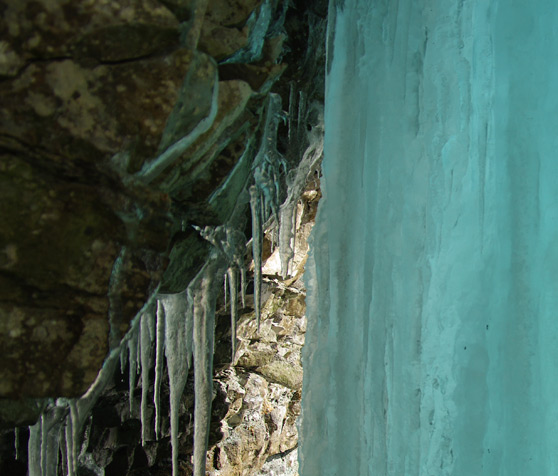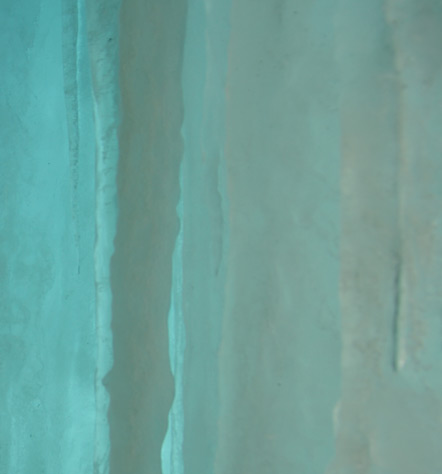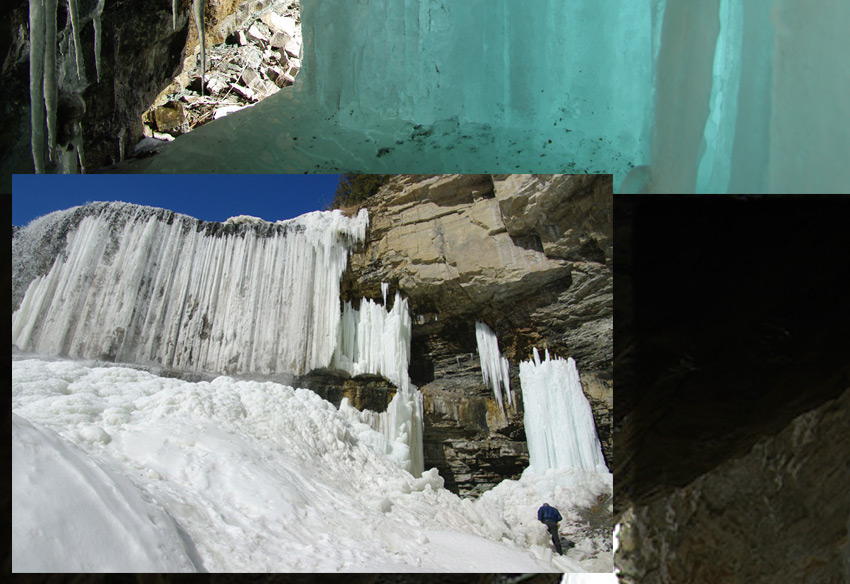 |
 |
||
|
|
 |
||
 |
|
||
 |
|||
|
|
|
|
|
| Ice Colours Imaged by Lori & Peter Checkowy behind the Websters Waterfall near Hamilton Ontario, Canada on the Niagara Escarpment. ©Lori & Peter Checkowy, shown with permission. |
 |
 |
||
|
|
 |
||
 |
|
||
 |
|||
|
|
|
|
|

| About - Submit | Optics Picture of the Day | Galleries | Previous | Next | Today |
| "We were intrigued by the variety of shapes and hues of those huge Ice formations. We crawled behind the wall of frozen pillars and were simply awestruck. With every turn we discovered different shapes and colours. The end-section produced this amazing turquoise shade and in mid-section it was more a honey gold." Early Arctic explorers were amazed by the colours of ice. They expected dazzling white and instead they saw all manner of wondrous hues. Pure ice is not completely transparent. It slightly absorbs long wavelength light as shown in the spectrum at lower left. Therefore light shining through a thick enough section, as in an ice cave or behind a frozen waterfall, can appear bluish. Other factors change its colours. The incident light modifies its appearance – sunrises and sunsets are extreme examples. And often the ice is coloured by included materials, minerals ground from glaciers, finely divided soils and micro-organisms. Soot has modified the absorption of ice layed down during the Carbon Age. The honeys and golds of the lower image could be from many causes – sunlight reflected from the rocks at left and included rock and mineral debris are possibilities. |